Birds have nictitating membranes that are also referred to as a third eyelid; they are fascinating structures that I knew little about until I found myself photographing them surprisingly often.
Wedge-tailed Eagle (Aquila audax)
1/1250, f/7.1, ISO 800
The eagle above is not using its nictitating membrane but sometimes an otherwise reasonable shot, as below, is affected by the third eyelid creating the appearance of a hazy eye. It’s always a good idea to take more than one shot if the bird stays still long enough, just in case it blinks.
Wedge-tailed Eagle (Aquila audax) – nictitating membrane
1/2000, f/6.3, ISO 1600
~
If you look closely, the eagle’s iris, pupil and catch-light can be discerned behind the nictitating membrane. Birds pull their third eyelid across to keep their eyes moist, to clear them of debris and to protect them. They often pull them across when feeding offspring to protect their eyes from the eager little feeders. Birds of prey and insect-eating birds use the membranes to protect their eyes when capturing prey. The eagle’s membrane appears thicker and tougher than some other species, presumably its offspring and prey could be relatively large and therefore have the potential to do more damage. Even though the membrane isn’t as translucent as some species’ third eyelid the eagle is still able to see through it.
~
Bush Stone-curlew (Burhinus grallarius)
1/800, f/6.3, ISO 1600
~
The expression on this Bush Stone-curlew was amusing as it tilted its head skywards and then peered towards me. I like the ruffle of feathers at its breast but I’m not sure whether I would have shared this image if the next shot hadn’t given me the idea for this week’s post.
~
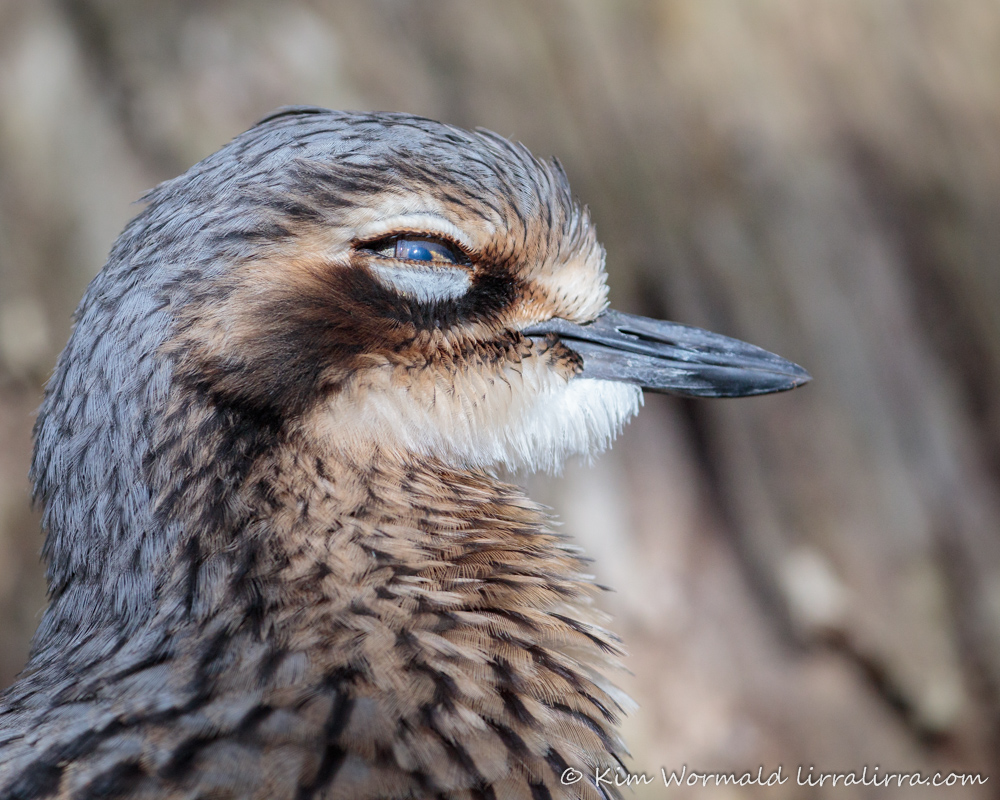 Bush Stone-curlew (Burhinus grallarius) – nictitating membrane
Bush Stone-curlew (Burhinus grallarius) – nictitating membrane
1/800, f/6.3, ISO 1600
Nictitating membranes are controlled by muscles and are pulled across the eye horizontally, from the front to the back. In the image above the membrane is about three-quarters of the way across the eye. It is more translucent than the eagle’s third eyelid, the stone-curlew’s iris and pupil can be seen clearly.
Diving birds, like the Australasian Gannet, use their third eyelids to protect their eyes while swimming under water. Peregrine Falcons use them when hurtling towards their prey at speeds of over 300 kmph and northern hemisphere woodpeckers use them to protect their eyes from splinters and to help prevent injuries to the retina from the jarring associated with hammering.
Magpie-lark (Grallina cyanoleuca)
1/2000, f/10, ISO 1600
This Magpie-lark was perched on a fence at the Western Treatment Plant. It was a windy day and its feathers were being tousled as you can see in the images above and below. In the image above there is a small feather to the right of the bird’s eye, at about 2 o’clock; with the feather’s quill pointing to the left.
Magpie-lark (Grallina cyanoleuca) – nictitating membrane
1/2000, f/10, ISO 1600
In the photograph above, the small feather has been blown into the bird’s eye. With a shutter speed of 1/2000 of a second this image captures the nictitating membrane in the process of pushing the feather out of the eye. Both Magpie-lark images were taken at 3:14:21 pm; theoretically less than 1/100th of a second between the shots.
I rarely notice nictitating membranes when observing birds but I see them fairly often in images taken with a fast shutter speed. A while ago I realised that the membranes look quite different in individual species and started saving some of the ‘blinking images’.
Several creatures have functioning third eyelids, including some reptiles, amphibians, fish and a limited number of mammals. Humans have a semilunar fold in the corners of our eyes that no longer functions. I find this vestigial remnant of such a useful structure quite fascinating. Why on earth have we lost the ability to moisten our eyes without blinking, or to protect our eyes from flying dust and sand while still being able to see where we’re going and most annoying of all, why have we lost the ability to remove dust and eyelashes from our eyes without resorting to the corner of a damp tissue or imploring friends for help?
Happy birding
Kim
~ thank you for visiting and commenting
~ if you would like to join subscribers receiving a weekly email when lirralirra is updated, please use the ‘subscribe’ box above right
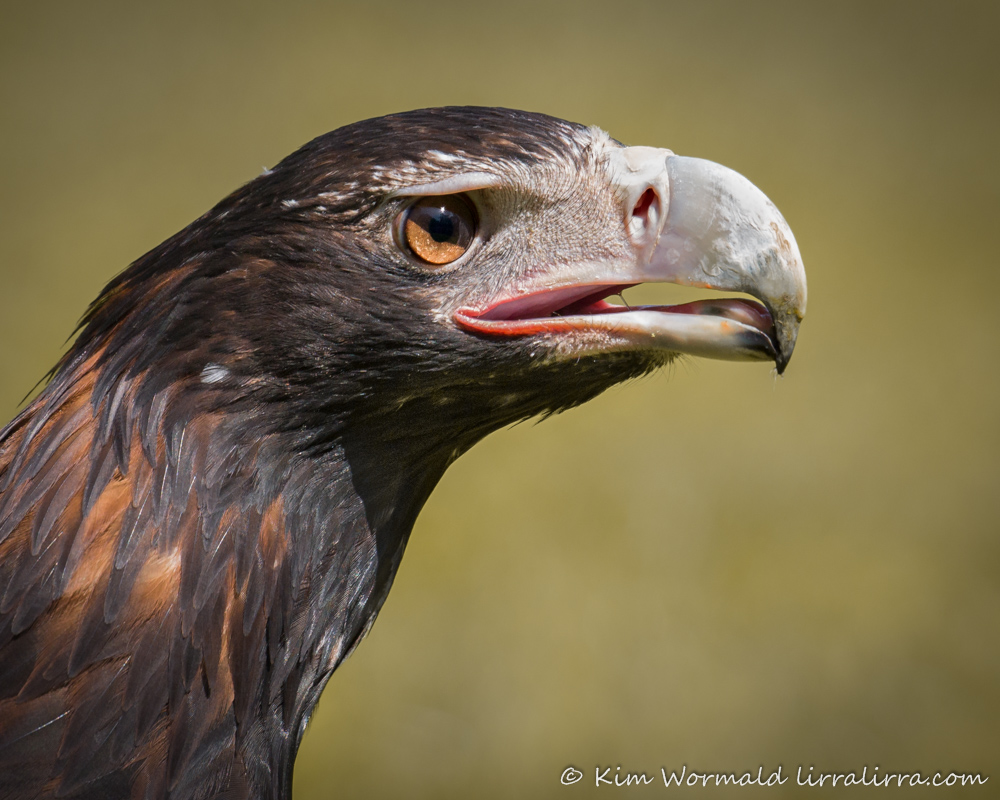
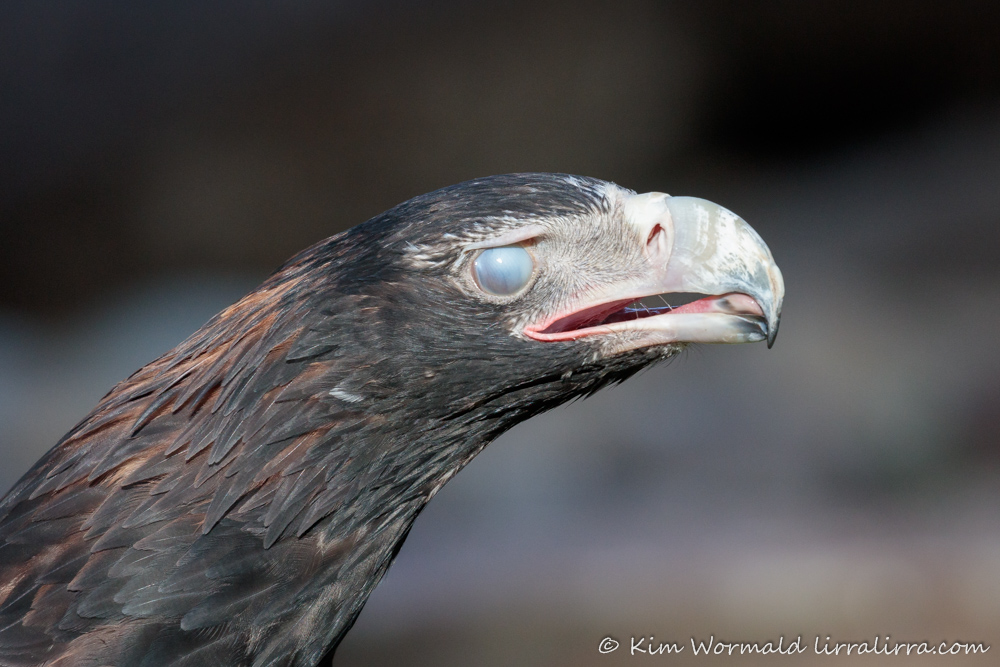
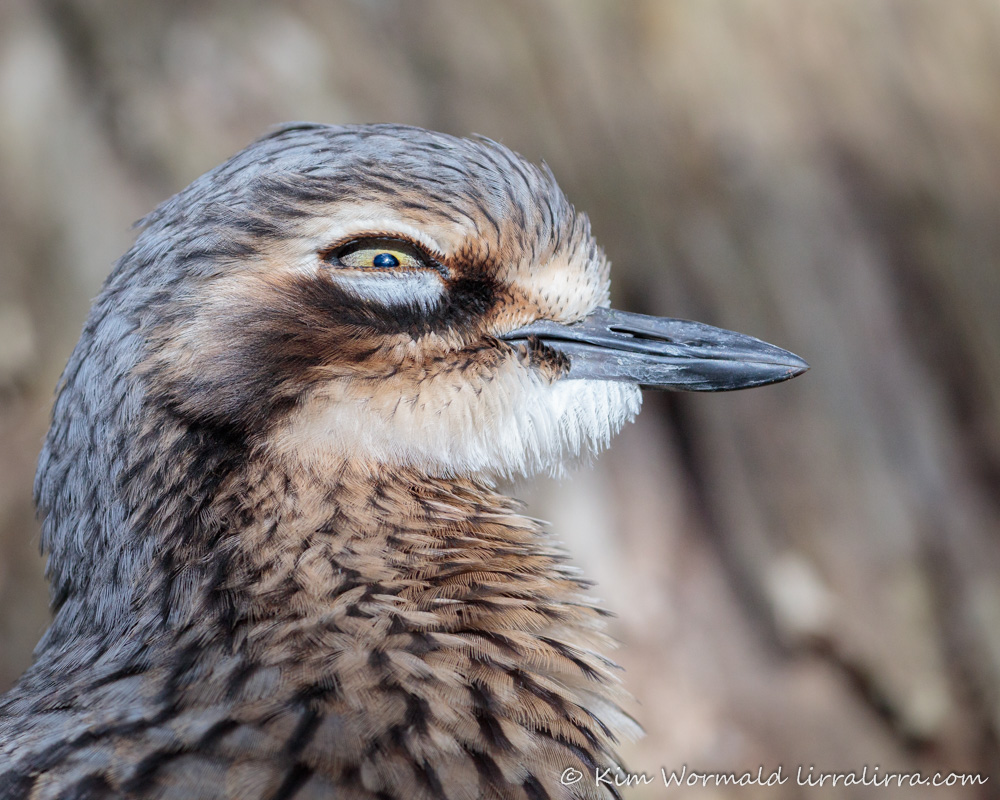
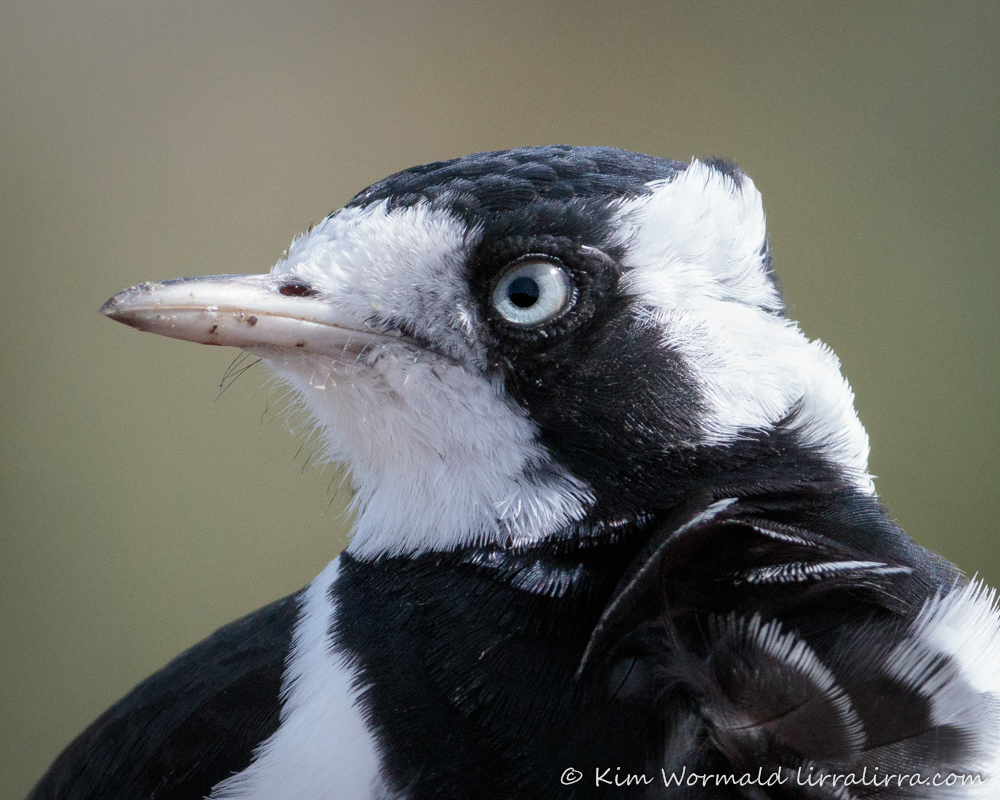


[…] to face the wind, which surprised me, especially as it kept its eyes open and didn’t use its nictitating eyelid (click for more information) to protect […]
Wow, super interesting! Definitely a shame that we have lost ours!
Now you’ve got me thinking what it would be like to see UV colours like birds can … how beautiful it would be!
Nice that you could show both the open eye and the nictitating membrane. I learned about this when I was watching Cornell Nestcams online. The moderators often have interesting tidbits to impart! 🙂
I have found some of my bird shots with nictitating membranes across also. I never realised different species had different opacities. How fascinating!
I also never realised we have the remnants of one. It would be very handy indeed!
The nestcams you mention sound interesting Kim, I’ll google them later. I’m wondering if they could include the eagle one I watched a couple of years ago, it was very addictive!
VERY interesting stuff. I have noticed them often in photos and figured they were an inner protective membrane of some type but great to learn more, find out the real name and see they can even be used to remove debris from the eye!!
Capturing the image of the Magpie-lark removing the feather from its eye was such a lucky shot, it’s such a brilliant membrane to have at the ready. Thanks for your comment Kris, I’m glad the post was a bit of an eye-opener
Interesting ☺️
Nature is incredibly interesting, I love it! 🙂
Great post Kim.
Thank you Warren, photography can reveal some fascinating sights
And some still consider us the ‘superior species’. Queue hysterical laughter.
Loved these images of something I knew about, but have never been able to observe in such detail.
I felt very lucky to have captured the Magpie-lark image, a third eyelid would be so useful!
fascinating photos and commentary kim. i had no idea…
Photography is a great way to highlight everyday details that usually go unnoticed, I always feel privileged to learn about the details.
Cats can do it too can’t they? Very interesting post.
Cats and dogs have third eyelids, but they don’t use them in the same way. If you see them continuously across a pet’s eye I think it’s time for a visit to the vet. I’m glad you found the post interesting, thanks for letting me know.